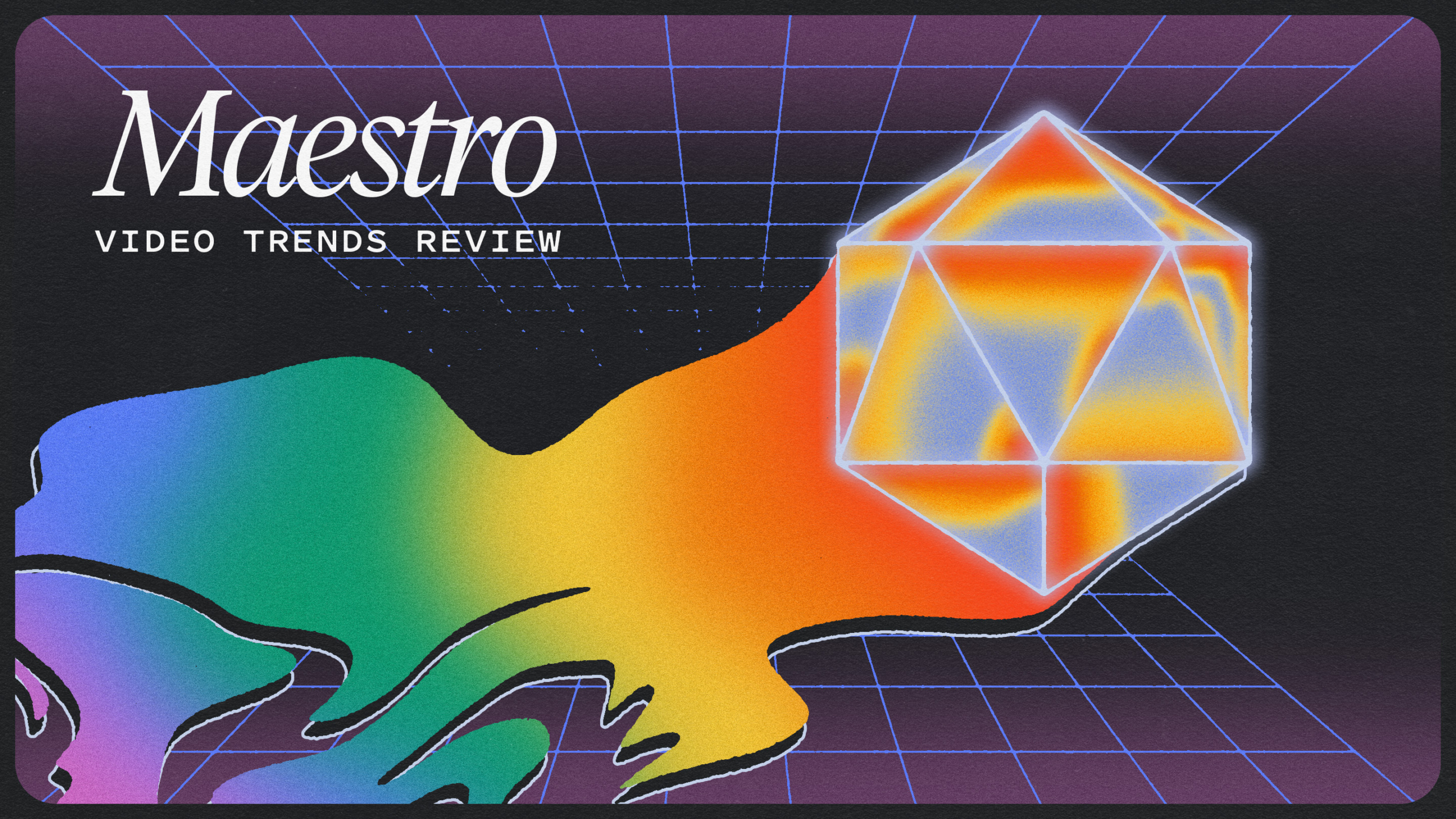Struggling to keep up with video-based learning trends? We get it—trends in the media world move fast, and the world of L&D is busy. How do you keep up with the latest innovations?
If it’s sometimes a challenge to keep a pulse on what’s new in video, you’re not alone. The demands on learning pros are higher than ever, plus media likely isn’t your only area of expertise. L&D is often slow to adopt new trends and technologies, but with solid intel from people in the know (that’s us!), you can jump on the right trends and level up your video-based learning.
Video in the learning industry
First, a quick refresher on why it’s worth it to keep up with the latest video-based learning trends. It’s no secret that video is a powerhouse of learning potential. Video-based learning projects—when done right—capture the hearts and minds of audiences, and cutting-edge video technology can help communicate abstract subject matter and complex ideas in ways other mediums can’t. And yet, many of the most popular trends in learning and development don’t capitalize on the versatility of video as a learning delivery method—either because of the time constraints, assumed price tag, or a lack of internal capabilities. But the payoffs of producing purposeful, high-quality learning-video content far outweigh the costs.
Maestro’s in-house video production team brings high-quality, engaging media solutions to the learning space (check out a teaser of our work below!):
Our Media team is constantly tracking the latest industry trends and putting them into the context of L&D. Ready to get caught up to speed with what’s trending in the world of video?
Here are five video-based learning trends that will take your learning experiences—and outcomes—to the next level.
Video Production Guide: How to Make the Most of Your L&D Budget
When you’re getting started with a video-based learning project, every detail has to be considered—should you hire actors or use team members? What type of animation is best for your goals? And how can you get the results you want without blowing your budget?
This free, interactive guide offers guidance on all that and more. We’ll help connect the dots between your learning objectives and different types of video production—no more feeling underprepared and overwhelmed when creating video projects with a partner. This guide will help you get clear and feel confident.
Get the guide→Short-form content
Do you spend much of your time looking at a screen? If the answer is yes, then you’re already familiar with short-form video content (i.e., videos under three minutes). Outside the learning industry, short-form content is king—from TikTok dance challenges to those cooking videos you’ve seen at the gas pump. That’s because marketing professionals and influencers alike know that short, concise, and well-produced videos are one of the most effective ways to deliver material and keep people engaged. And since you, as a learning professional, are essentially marketing your material to your learners, it makes perfect sense that short-form video content is among the trends in L&D to watch.
Video-based learning trends: The value of short-form content
The great thing about incorporating short-form video content into your learning experience is that it benefits both the creator and the learner. Short videos don’t just deliver learning content that’s easy for the learner to digest; they also encourage you, the creator, to hone your key messaging and cut the fluff. When you only have a couple of minutes to communicate your point, you’re more likely to get to the heart of your learning material quickly.
This approach will also earn you some brownie points with your learners because it shows them that you value their time. So instead of the typical 10-minute explainer video, try chopping your learning material up into bite-size pieces, focusing on key ideas, quick-gets, and memorable content.
Get inspired
Want to see short-form video content in action? We executed bite-sized learning videos for the managers at Johnny’s Markets because we knew, due to chaotic schedules, they could only dedicate a small amount of time per week to learning. These short-form videos are one aspect of a comprehensive leadership-development curriculum that leveraged not only media but also application activities and coaching with their higher-ups. Check out the short introduction video that kicked off the learning program.
Interactive video content
What if there were a way to create scenarios that were more immersive, more realistic, and helped increase learner engagement and motivation? That’s where our next trend comes in: interactive video content. Generally speaking, interactive video content is content that a viewer can directly interact with or impact to create user-specific results. Think of those choose-your-own-adventure stories from grade school. That’s the analog version of interactive content.
The value of interactive video content in learning
Interactive video content is a great way to ensure your learners engage with the material, because in order to make informed decisions about where to go next, they have to pay attention. Plus, because of their active role in these interactive experiences, learners are more likely to retain and comprehend the material. Learning is a process, and part of that process is putting your knowledge to the test, failing in a safe environment, and trying again to see if you can get a different outcome.


Get inspired
Interactive video content is one of the quickly growing video-based learning trends that could transform your learning initiatives. Check out this dual-narrative Honda advertisement that lets the viewer control the story through an interactive film format. Pretty compelling, right? Even if you don’t have the capabilities in-house to create interactive video content, the right learning partner can make the magic happen for you.
Video-based learning trends: Authentic stories and experiences
An essential element of any effective learning experience is connection. When learners connect with the material—intellectually, emotionally, socially—the learning is more likely to stick. One way to create and foster this connection is by prioritizing authentic storytelling, in other words, highlighting real people and sharing real stories. Learning should meet people where they are, and by leveraging learners’ real thoughts, stories, and experiences, you’re much more likely to create experiences that resonate. Consider the video trend of user-generated content (UGC), which is popular outside the learning industry. Brands leverage videos created by consumers because they help build trust, boost brand awareness, and cultivate relatability.
The value of authentic storytelling in learning
Being real builds trust between you and your learners. When learners see themselves reflected in the content, it captures their attention. Plus, the applications for this learning video trend are endless—from docu-style interviews to collaboration with learners from your audience to inform your script. Just be sure to incorporate the learner perspective into your learning experience with intention. What are your learners’ mindsets? What do they value? What would make them feel seen and heard? And what’s the most natural way to integrate their stories into your production?
Get inspired
Include learners in the video-development process by conducting learner interviews and incorporating their stories and perspectives into your script. Usually, it’s a best practice to hire on-screen talent over using real learners in your video—even the most outgoing team members can freeze up in front of a camera.
But in some cases, the story will resonate best if it’s coming directly from the people who experienced it—that’s why so many brands opt for UGC. Especially if you combine authentic stories with a well-produced, high-quality production, you’re able to tug at learners’ heartstrings while delivering a clear, compelling message. When we partnered with Kalamazoo Valley Community College to tell students’ enrollment stories, we worked with real students to create a series of short, emotionally evocative, and beautifully produced videos—check out one of the teasers below!
Short films and storytelling
Sometimes, the situation calls for a longer-form narrative centered around a message or story. There’s a time and place for straightforward, bite-sized content, but some messages will resonate better in story form. This particular trend is catching on quickly in the media world—many big brand commercials are beginning to adopt this approach, crafting evocative short films in place of traditional commercials. Why? Because stories hit home; they capture the viewer’s attention and affect them emotionally, which makes a lasting impact.
The value of short films and storytelling in learning
Your learners are people first. They’re not blank slates—they have complex relationships and personal challenges just like everyone else, and sometimes the best way to get your message across is to communicate it through story. Humans are wired for storytelling, after all. And with a narrative video, inspired viewers are more likely to make choices that create meaningful change.
Get inspired
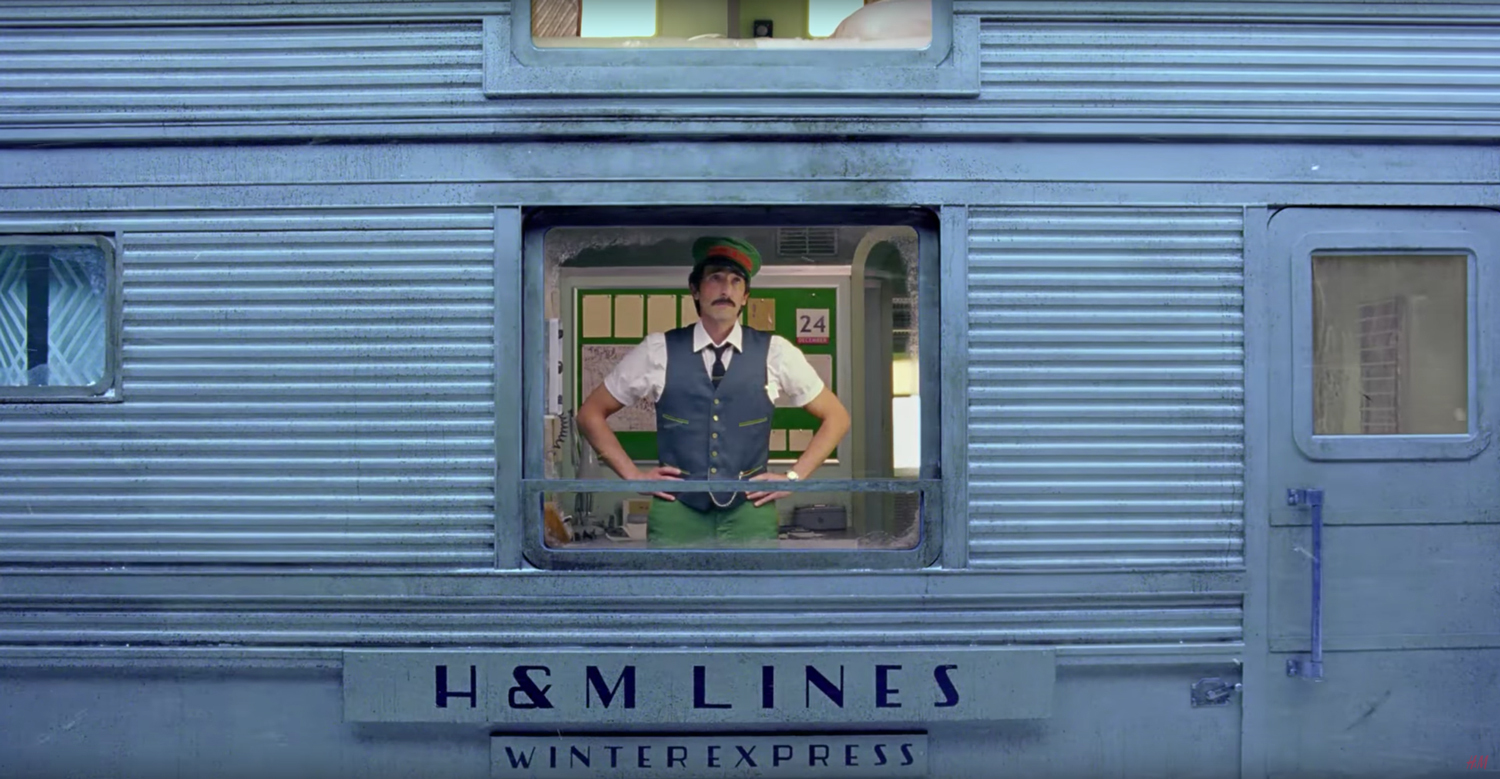
Next time you brainstorm which learning video trends would best suit your L&D strategy, consider the lasting impact of short films or storytelling, especially if you’re tackling subject matter such as soft skills, leadership, or culture training. Another helpful guideline to keep in mind: if your video is longer than three minutes in length, opt for a narrative approach. For example, H&M recruited filmmaker Wes Anderson to create a “fashion picture” for them, resulting in a beautiful and funny holiday short film that used narrative to deliver the brand’s message.
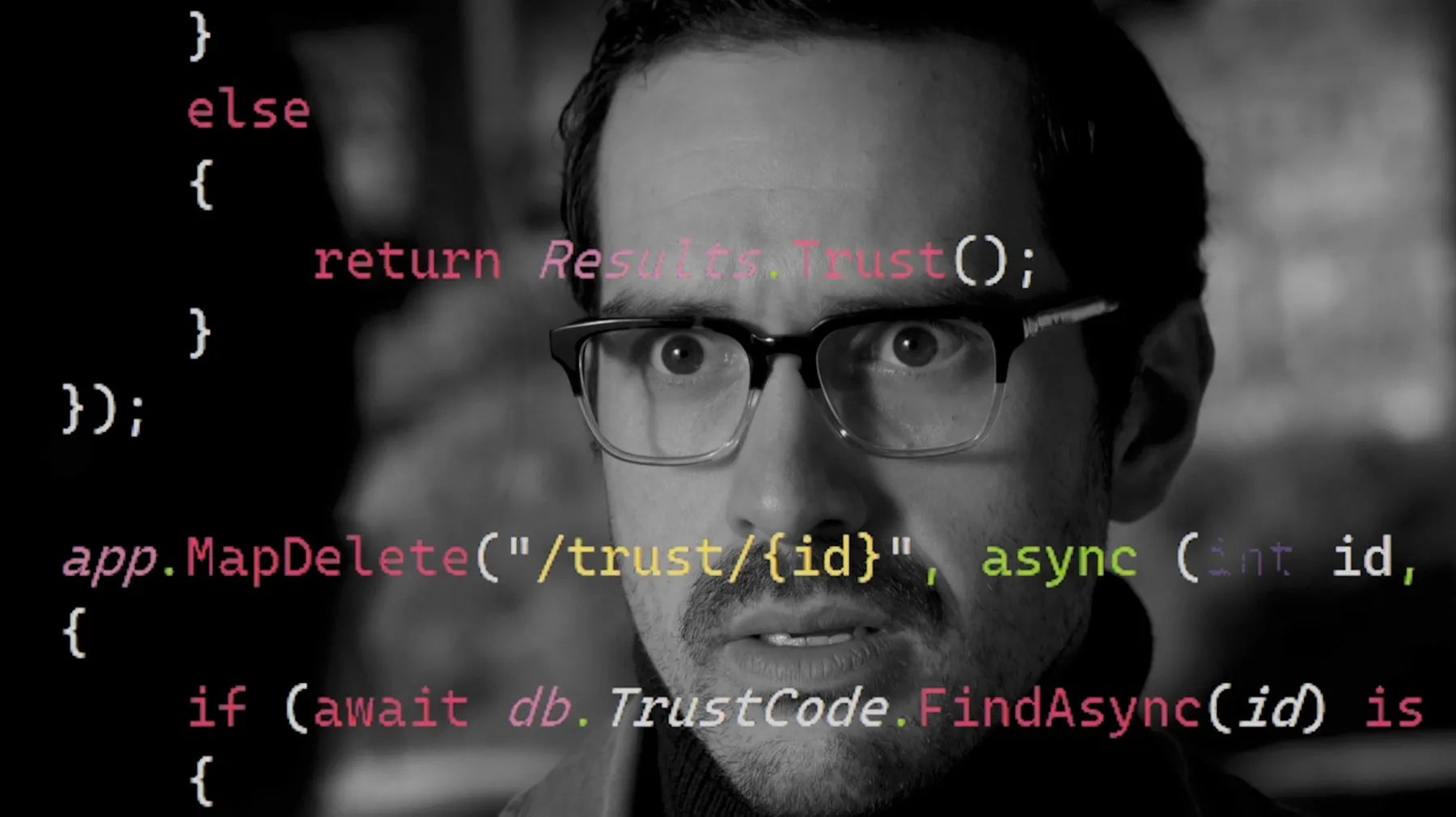
Still not convinced that long-form narratives have a place in L&D? Check out the story of how Microsoft employees became hooked on the company’s compliance training video series, Trust Code. The narrative-based video series features flawed characters and dramatic cliffhangers, all while covering important compliance information that employees need to know—ah, the power of a good story.
Video-based learning trends: On-set virtual production
Sometimes a technology emerges that completely shifts how we approach video production. On-set virtual production is a visual effects technology in which LED volume walls (systems of linked high-end LED panels) display video footage or 3D content to form different backdrops for a set, opening the doors for more inventive and efficient production design.
The value of virtual production in learning
Right off the bat, on-set virtual production can remove certain logistical challenges that might prevent creators from achieving their specific vision. For example, if you want to shoot on location, but for whatever reason it’s not realistic to do so, a virtual production could be the perfect solution. If your set would be complex, time-consuming, or expensive to create, virtual production could provide a solution. You’ll also have more control over your environment if you opt for virtual production—filmmakers can make adjustments and changes quickly, incorporate special effects, and manipulate lighting as they see fit. A tip: in order to really sell your virtual production, you still should integrate some subtle production design to bring the backdrop to life. A good media partner will help inform this!
Get inspired
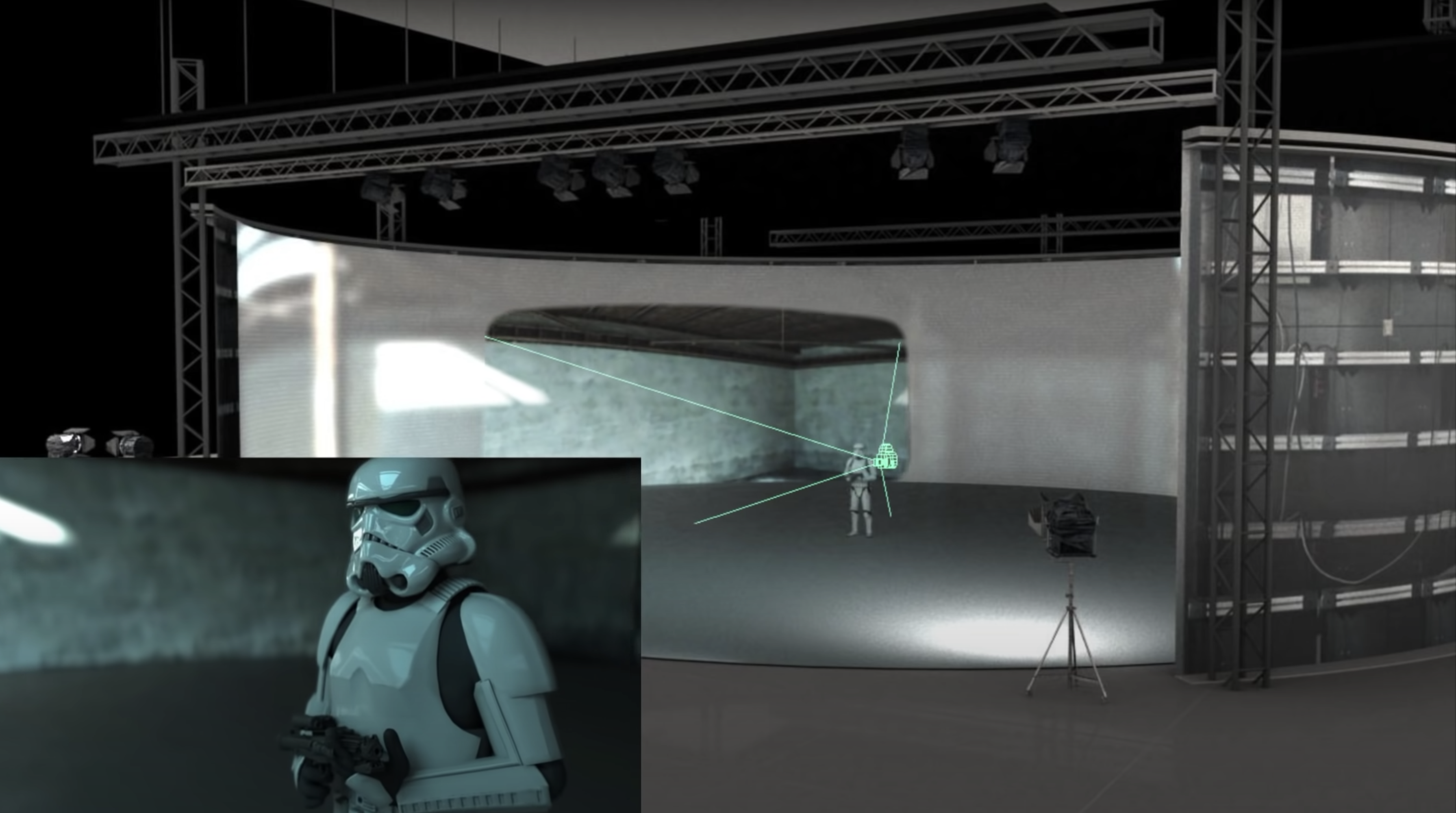
Virtual production is most well known for its use in movies and television. Ever heard of a little show called The Mandalorian? It utilizes a massive LED-wall system called Stagecraft to immerse the cast inside CG environments. Virtual production is now making its way into other industries—including L&D—to make previously inaccessible backdrops a reality. Watch this behind-the-scenes video from The Mandalorian to see virtual production technology in action.
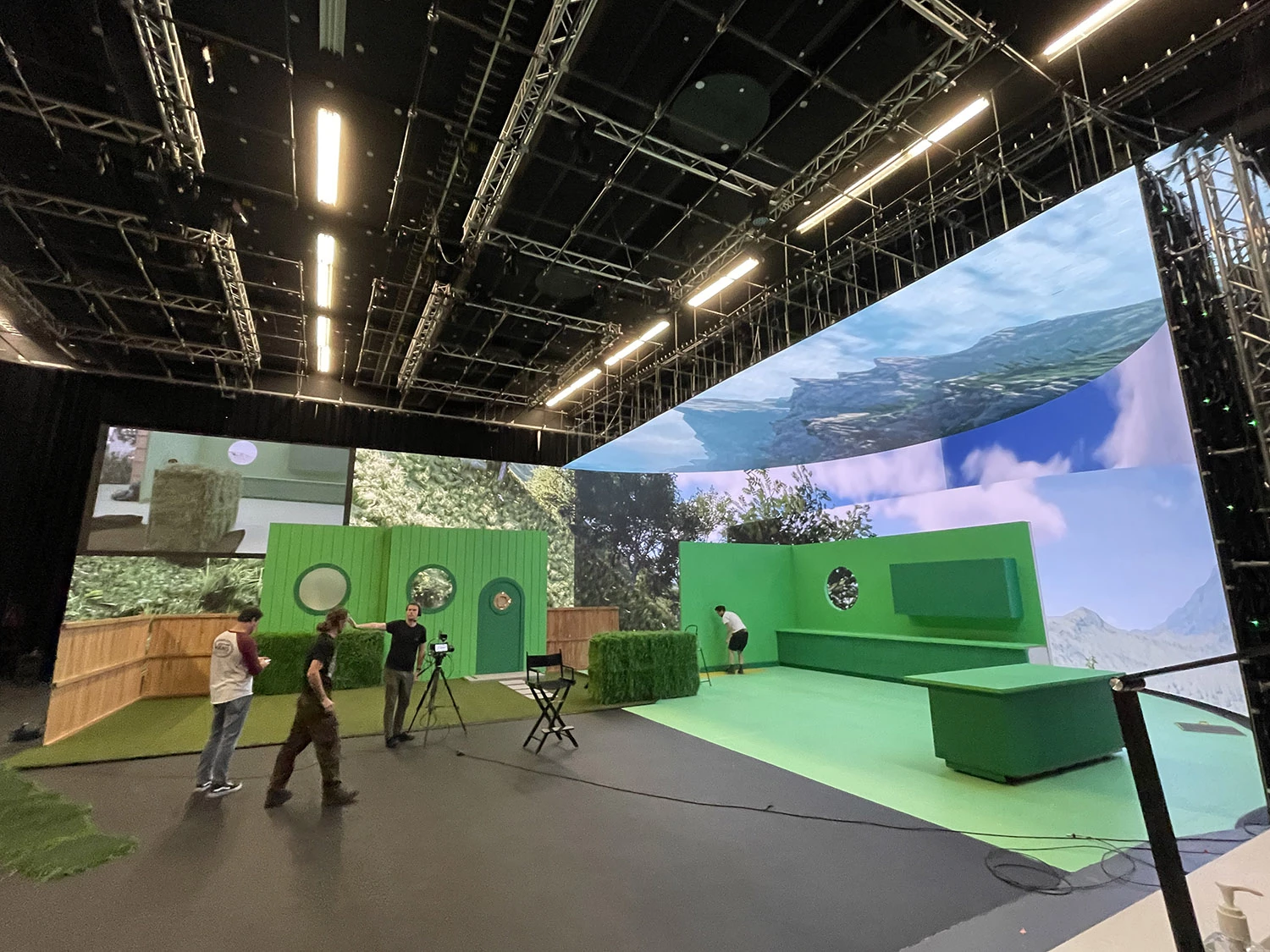
But that doesn’t mean virtual production is only available to billion-dollar television sets—the technology is now widely accessible for a variety of budgets and needs. Kristyna Archer is a director and photographer who creates highly stylized production shoots for commercials, and her work for Green Mountain Energy used a 124ft LED volume wall and creative set dressing to bring to life stylized, branded, and interconnected worlds.
Embrace video-based learning trends with the right partner
There are countless ways to create a great video learning experience, but working with a learning partner (especially one with an in-house team of media experts) might be the wisest decision you can make. We believe that learning works best when beautifully designed, but it’s more than just making the content look good. When we work with clients on a video project, we always ask how they want their audience to feel and what they want their audience to do after interacting with their content. That’s because we know that learning exists to create change—and video is an excellent changemaker.
And if the thought of production costs scares you, rest assured that the right learning partner can still deliver high-quality and impactful media content on just about any budget. Just remember to be upfront with your partner about any limitations so they know what they have to work with.
Are you ready to embrace the latest video-based learning trends in your learning initiatives? Download our interactive Video Production Guide to start mapping out your vision and match your learning objectives to your video strategy. When it comes to video in L&D, the possibilities are endless.
Video production can be a complex process—are you feeling overwhelmed?
Our free Video Production Guide: How to Make the Most of Your L&D Budget makes it easy to interact with and explore key stages of the video production process—from discovery to post-production.
Get the guide→